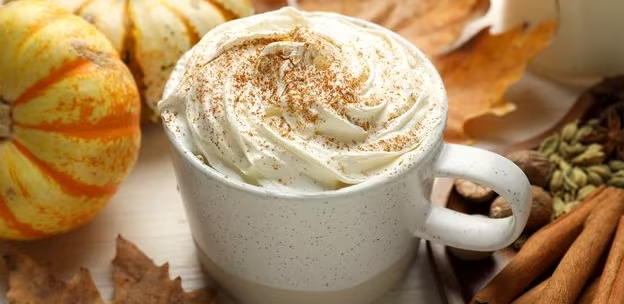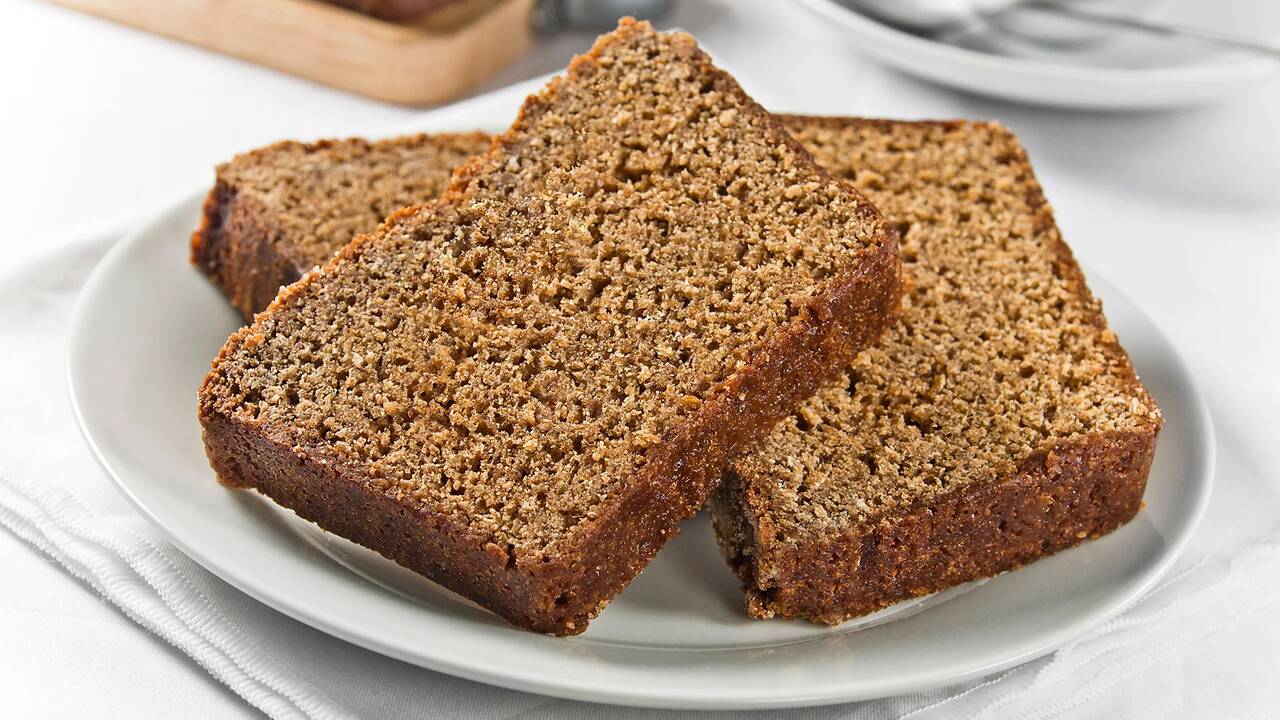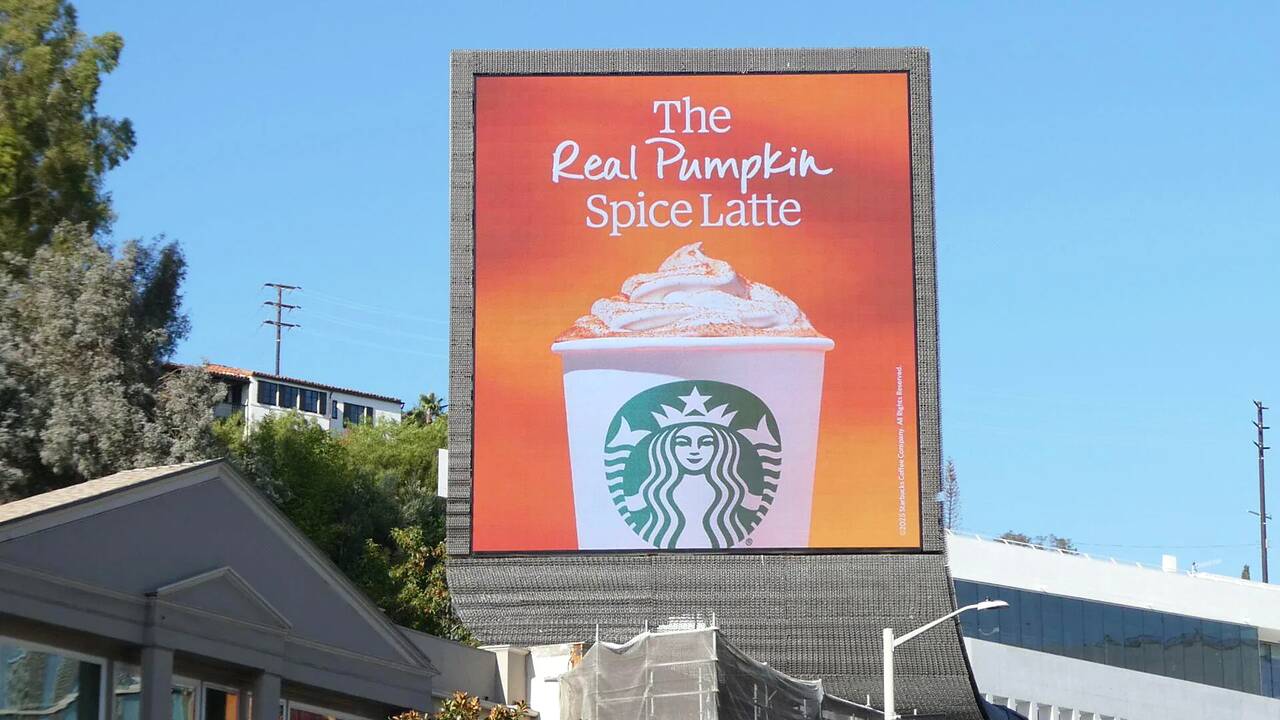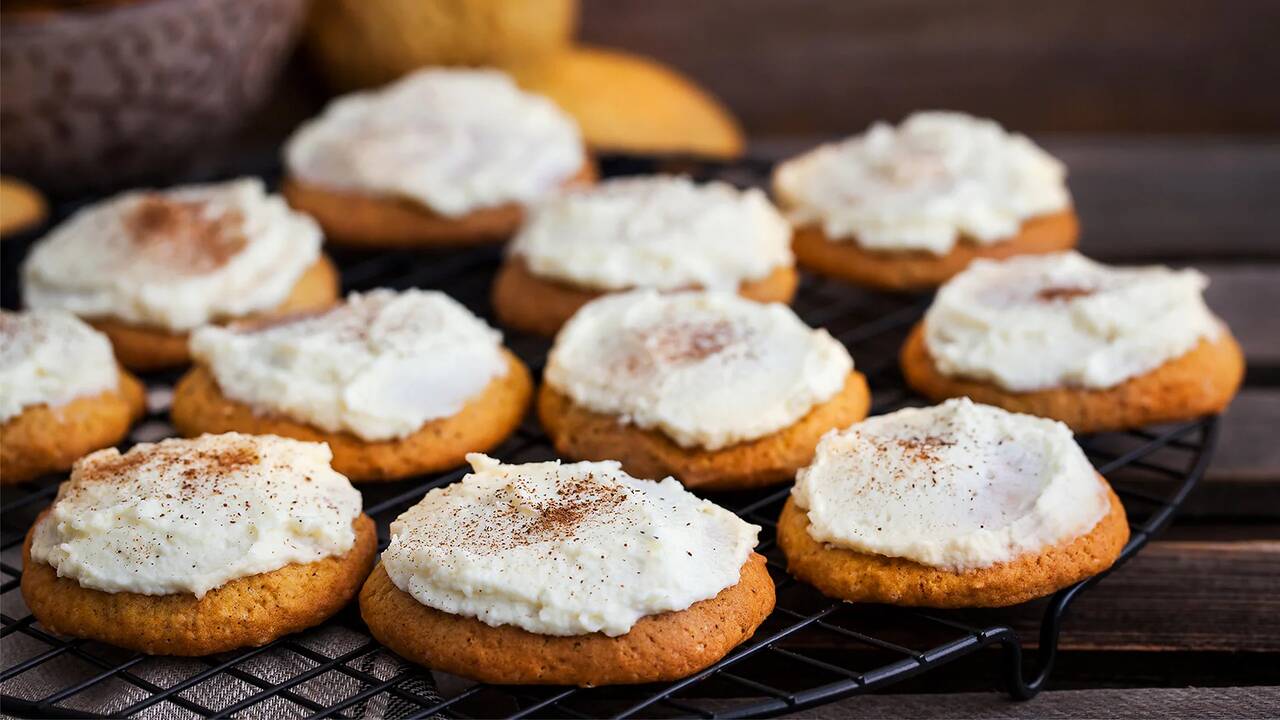The divisive autumnal drink with a shady past
BBC | 14.11.2025 20:00
The aroma of cinnamon and nutmeg smells like sweet autumn nostalgia in the US, but the real story behind pumpkin spice is far spicier.
Long before I'd ever sipped a pumpkin spice latte, I was in love with pumpkin spice. As a student in London, I waited eagerly for autumn, when auburn leaves crisped underfoot and my American flatmate prepared her annual Thanksgiving feast. The kitchen was redolent with the American spice mix – a blend of nutmeg, ginger, cinnamon and clove – and a parade of hearty dishes emerged. My favourite was the pumpkin pie; sweet, spicy comfort on a fork.
My youthful encounter with that fragrant spice blend was, of course, hardly the last. In the years since, pumpkin spice has metamorphosed from a simple seasoning into a full-blown national obsession. Americans splash out $500m each year on pumpkin spice-flavoured foods, while spending on pumpkin spice products escalates every year, with the industry slated to more than double in size by 2035.
Americans insist it wasn't always this way. "I only remember [pumpkin spice] as the key flavour in pumpkin pie, and we'd make it once a year for Thanksgiving," says culinary scientist and author Jessica Gavin. That changed in the early 2000s, when the "Pumpkin Spice Latte" suddenly appeared on everyone’s radar.
Blame Starbucks (many do); its 2003 introduction of the PSL (Pumpkin Spice Latte) is credited with igniting pre-Thanksgiving pumpkin spice consumption while cementing the combo as the American shorthand for autumn.
But how did pumpkin spice become synonymous with US culture when nutmeg, ginger, cinnamon and clove are indigenous to Asia?
The answer lies in the dark history of colonialism.
To trace that story, we have to look far from the US to the islands where the world's most coveted spices first grew.
Though the Asian spice trade had existed peacefully for centuries, it would turn deadly during the conquest of the New World. In 1621, the Dutch, desperate for a monopoly over the expensive, rare nutmeg that grew only in Indonesia's Banda Islands, would annihilate nearly the entire Bandanese population, keeping the rest in near-slavery, while selling the spice for massive profits in Europe. In Sri Lanka, home of the cinnamon plant, the Portuguese, Dutch and English forced locals into harvesting and peeling cinnamon under brutal, exploitative conditions; those who resisted were flogged and tortured. Cloves from Indonesia’s Ambon Islands were gathered under the same Dutch regime; while ginger, introduced to the Caribbean in the 17th Century, was cultivated on plantations where the English, Spanish and French relied on enslaved labour.
Meanwhile, across Europe, those same spices became synonymous with celebration and comfort, used to flavour meat and "baked dishes such Christmas cake or the British figgy pudding", says food historian Dr Ashley Rose Young. "North America was colonised by many different European groups, so the US in its early iterations had many British influences. That included making heavily spiced ginger cake and other heavily spiced dishes in the holidays."
 Alamy
AlamyAs Americans developed their own cuisine, those holiday traditions of spiced, sweet dishes persisted. "Citizens started to develop their own cuisine to distinguish themselves from their colonial overlords, including recipes that used local squash like pumpkin," says Young.
In 1796, Amelia Simmons's American Cookery was the first to list nutmeg, ginger and allspice as ingredients in "pompkin pie"; and with the rise of "convenience cooking" in the late 19th and early 20th Centuries, spice companies like McCormick started selling pre-made pumpkin spice blends.
By the late 1800s, North Americans had embraced the spice combination as a celebration of their own heritage – particularly during Thanksgiving, which was declared a national holiday by President Lincoln in 1863. "Thanksgiving has always evoked a bit of nostalgia for the colonial period, especially the popular story of the first Thanksgiving being a collaborative effort between the Wampanoag people and English settlers, at which pumpkin was consumed," says Becky Beausaert, Professor in Rural History at the University of Guelph, Canada. "This event suggests a cooperative relationship existed between Indigenous people and settlers… obscuring the realities of settler colonialism."
The spice that conquered a nation
But pumpkin spice's most successful colonisation may be of the US itself in the early 21st Century… via a simple drink.
There are various contenders for the crown (including, apparently, the singer Tori Amos), but the Pumpkin Spice Latte is widely attributed to Starbucks. The intentions were pure; to create the chain's first autumnal drink. And the formula was simple: espresso and steamed milk sluiced with pumpkin spice sauce (later, real pumpkin puree), then dolloped with whipped cream and pumpkin pie spice topping.
 Alamy
Alamy"From a consumer psychology standpoint, pumpkin spice works because it tastes like a feeling," says Helen Chun, Professor of global marketing at Cornell University. "Starbucks tied it to warm emotional associations – cosiness, nostalgia, family gatherings – and then offered it only for a limited time, which builds anticipation and desire."
Matthew Philp, associate professor of marketing at Toronto Metropolitan University, echoes the sentiment: "They could have called it 'Pumpkin Pie Latte' or 'Thanksgiving Latte' but something about 'Pumpkin Spice' suggests a sophistication and adds a stickiness point that people immediately understood, even though it was not really a term before Starbucks."
There may even be a scientific reason for its success, adds Gavin: "Compounds like cinnamaldehyde in cinnamon, gingerol in ginger and eugenol in cloves activate TRPV1 receptors, which sense gentle heat and create a mild warming sensation that feels cosy and comforting." When added to fatty substances such as cream, butter or milk, the flavours of the spices are enhanced. "That's why pumpkin spice tastes especially rich and rounded in creamy desserts, pie fillings and lattes."
Since debuting in Washington DC and Vancouver in October 2003, Starbucks has edged its annual release date earlier and earlier. In 2025, it launched on 26 August, triggering a 27% surge in foot traffic to US Starbucks stores – all the more impressive given the brand's current struggles with customer boycotts and strikes.
But not all Americans bow to pumpkin spice mania; the late Anthony Bourdain infamously wished to see it "drowned in its own blood", and the mad devotion to the drink is even seen as "basic" in cynical circles.
"Social media adopted it before the term 'being basic' became a bad thing," says Philp. "At that time, it was okay to post photos of our lattes with our cosy socks in the background without people cringing. When PSLs were taking off so was 'basic' culture of posting pictures of your food in a faux-candid picture."
 Alamy
AlamyIn 2015, the movement #decolonizepumpkinspice emerged, linking the drink to colonialism and privilege and calling for awareness of the devastating impacts of the global spice trade. The movement gained traction on X (then Twitter) and the blogosphere, and continues to lurk within the North American subconscious.
Has any of that changed consumers' mindsets? "People should be aware of the costs of the spice trade," says cookbook author Maya Kaimal of Boston, Massachusetts. "But at the end of the day, that's ancient history."
Indeed: 22 years after its launch, the PSL appears on the seasonal menu of countless chains, such as McDonald's, Dunkin', Krispy Kreme and independent coffee shops. Every year around September, a cornucopia of pumpkin spice-flavoured and scented products hit store shelves in the US and Canada – for instance, The Laughing Cow's spreadable cheese, Trader Joe's hummus and Chardonnay, even Target's trash bags.
For Suzy Badaracco, president of Culinary Tides, Inc, a private think tank that analyses food industry trends, the nearly aggressive pervasiveness of pumpkin spice is neither a surprise, nor off-putting. "The truth is pumpkin spice became part of the flavour landscape," she says. "That pumpkin spice kitty litter? It's not absurd, it's a sign of how emotionally anchored it's become."
She adds: "[Pumpkin spice] isn't just surviving the 'too much' jokes, she's thriving because she's part of who we are."
More like this:
No wonder then that the global pumpkin spice market is growing. Japanese giant Muji now offers an instant PSL and Indian chocolatier Paul and Mike sells pumpkin spice chocolate – but most of the world still sees it as a uniquely American phenomenon.
"That pumpkin spice flavour is the flavour you get in a pumpkin pie, which is uniquely North American, and primarily served at American Thanksgiving," says Philp. "Pumpkin spice reminds people of the fall and possibly the strong memories of when they were younger stuffing their faces with tasty pie."
Furthermore, "[pumpkin is] deeply rooted in Native American cuisine," says Badaracco, "which gives it cultural and historical gravity that newer flavours can't easily replicate."
But as symbolic as pumpkins may be, pumpkin spice goes far beyond the pumpkin itself. "The scent of cinnamon and nutmeg instantly brings back feelings of warmth and togetherness," says Gavin. "Which is why that first latte of the season feels like a cosy ritual."
"That's what Western comfort culture often does," muses Badaracco. "It takes global or heritage ingredients and repackages them into something emotionally accessible. It reveals how Americans metabolise uncertainty: through warmth, ritual and repetition. That's why it endures."









